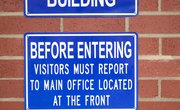School uniform policies are implemented in schools all across the United States and are often the source of heated debate. Supporters claim uniforms make schools safer and even improve student performance. Opponents claim they are ineffective, expensive and stifle student creativity. While some issues — such as whether or not uniforms look good — are subjective, some aspects of the argument are more apt for scrutiny.
Lack of Effectiveness
While studies haven't shown overwhelming evidence that school uniforms fail to reduce behavioral problems or create a sense of equality among students of varying socioeconomic classes, studies haven't shown they deliver on any of these promises, either. For example, a University of Houston study found a correlation between uniform policies and reduced student absences. Conversely, a study conducted at the University of Northern Michigan found no relationship between uniforms and achievement, and a "negative correlation" between uniforms and student behavioral problems. The research regarding effectiveness is still ongoing, but as of yet, it isn't promising.
Self-Expression
One clear drawback to school uniform policies is that they limit the abilities of students to express themselves visually. Students often use clothing as an outward manifestation of their personalities to show the world who they are without having to articulate it through speech or dramatic behavior. Those who must adhere to uniform policies have, to an extent, been creatively disarmed.
Cultural Exclusion
Exclusion exists on two levels. First, through the decision as to what the uniforms should look like, and second, through intolerance to students who want to dress according to their gender or sexual identities. A Native American tribe in South Dakota claims that their input was ignored when uniforms for their school district were being designed, which suggests school uniforms are culturally biased, according to "USA Today." Furthermore, school uniforms present a potential drawback for gay, lesbian and transgender students who might desire to dress according to their sexual or gender orientations. If a school isn't willing to accommodate such students, the school could be viewed as discriminative.
Costs Related to School Uniforms
While school districts have argued that uniforms will be less expensive than clothes for some students, they don't take into account the cost for low-income families. For families who struggle financially, the requirement to purchase school uniforms for their children could prove significantly more expensive than the clothes they buy normally, adding to their financial hardship.
Related Articles
References
- University of Houston: UH Study Suggests School Uniforms Reduce Student Absences, Disciplinary Problems; Mike Emery
- Northern Michigan University: Effects of a School Uniform Policy on an Urban School District; Joshua Reed
- First Amendment Center: Clothing, Dress Codes & Uniforms; David L. Hudson Jr.
- Ithaca College: School Uniforms
Writer Bio
Christopher Cascio is a memoirist and holds a Master of Fine Arts in creative writing and literature from Southampton Arts at Stony Brook Southampton, and a Bachelor of Arts in English with an emphasis in the rhetoric of fiction from Pennsylvania State University. His literary work has appeared in "The Southampton Review," "Feathertale," "Kalliope" and "The Rose and Thorn Journal."











